
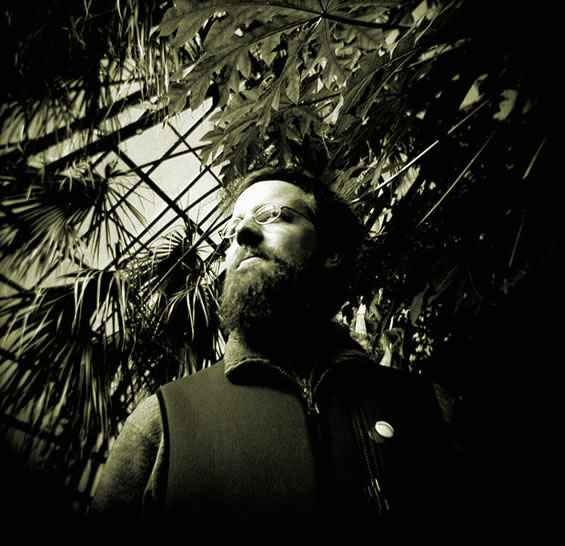
BACKTRACKING WITH GREG DAVIS
photo: Jim Newberry
Sound explorer Greg Davis possesses a fearless and seemingly insatiable appetite for new sounds, projects, and collaborators. The one-time Chicago resident and now Vermont-based musician has pursued an idiosyncratic path since establishing the Autumn Records label in 1997 and receiving his Master's degree in composition from the New England Conservatory of Music in Boston in 2001. Since then, Davis has issued a number of highly-regarded albums, including the solo works Arbor, Curling Pond Woods, and Somnia, as well as full-length collaborations with Keith Fullerton Whitman, Sebastien Roux, and Jeph Jerman. The albums are a remarkably diverse lot—Curling Pond Woods' folk songs seem worlds away from Somnia's gleaming drones and Ku's intimate field settings–yet they all originate from a singular, consistently fertile mind. Because the releases are so radically different, we thought it would be fascinating to hear Davis's own reflections on his work. To keep things simple, we focused on six full-length releases instead of including compilation guest appearances, vinyl releases, and split discs.
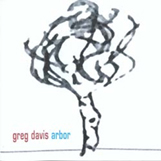
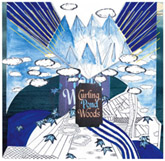
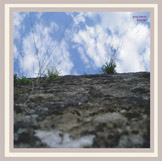
1. ARBOR (Carpark, 2002)
As I'm presuming you reject labels, I'm wondering how much it rankled you to hear music journalists so casually use the ‘folktronic' label when writing about the album, especially when its sound is so wide-ranging?
Ii didn't get too upset about the labelling of Arbor as folktronica or laptop folk. That term was used casually in the press release by Carpark so it wasn't a surprise that journalists ran with that term. People like genre names / styles so that they can have music fall into nice little boxes, but I've made a point in my musical career to make genre labelling seem pointless and to show that sound is music is sound....
Although there is a peaceful ambiance to much of Arbor's material, it's still resolutely explorative and experimental (a piece like “Submersion Tank Part One (V.2),” for example), yet you also managed to strike a deft balance between experimentalism and accessibility. Did you consciously try to achieve that balance?
Arbor really was just a collection of tracks that I made between 1997-2000 so it wasn't really conceived as an album necessarily from the beginning, but as I brought together different tracks that I had made and ordered them, it started to feel like an album. I think with Arbor I was just trying out some different things in different ways and for me it's always been about trying to combine different types of elements: acoustic vs. electronic, melody / harmony vs. noise, experimental vs. pop, etc. To me, it's all music and part of the music I make so combining what seems to others to be disparate elements feels perfectly natural to me.
Is there a dramatic difference—technologically and compositionally—between your approach on Arbor and today?
I'd say there is a pretty big difference between what I'm doing today and how I worked on Arbor. As you know, computer technology has grown leaps and bounds in the past ten years, so I feel like I'm utilizing more of the computer's power and ease of use, etc. now. When I started out making music with computers, I often quickly reached the edge of the computer's processing power / memory / etc. and had to deal with that limitation and work with it. Now it's not really a problem. I'd also say that now I'm not relying on the computer as much as I used to; right now, I'm more interested in instrumental textures and vibe and the sound of a piece, not using as much or very little processing or computer sounds. It's now just a nice splash of colour when I need it or a way to extend the tonal / timbral range of an instrument.
As far as my compositional approach is concerned, I think it has changed quite a bit. I'm not interested in micro-rhythmic programming like I was on Arbor although I am still interested in groove and feel on a track. I think I've found a way to make the forms of my pieces be more organic and flow from section to section, part to part, as well as also use more surprises and dynamics to really move the music around and take a journey. Oon the other hand, I'm also really interested in really gradual and static music forms, so I've been working in that way too. Since Arbor, I've decided not to use any samples from other peoples' music and also decided not to use programmed beats anymore. I felt that the way to have my own musical identity would be to record all of my own sounds and work with my own palette.
But, in general, I'm really just doing the same thing as I was on Arbor. I have a few microphones, a mixer, and a soundcard, and I'm recording a bunch of sounds into the computer and working with that to make my music. It's a pretty simple process.
Is Arbor, to some degree, the sound of Greg Davis trying to figure out where he's going and what he's musically all about? It's surprising, for instance, to hear elements of drum'n'bass surface in “Nicholas”—not the kind of thing one expects to find in a Greg Davis piece. Or does that kind of thinking go against the open-minded spirit you embrace, where all sounds and genres are open for consideration?
Like I said before, Arbor was a collection of tracks made over the course of three to four years. "Nicholas" almost didn't make it on the album, but a lot of friends really liked it so I included it. That track in particular was just an experiment in chopping up some breakbeats and samples which was really just an evolution of my interest in hip-hop from the late '80s - early '90s. So, yes, in a way, it was about being open to experimenting with different sounds and styles and trying to bring them together.
Would it be fair to say that the meditative opening of “Cumulus” suggests that you were already formulating Somnia at this stage, while the Sunflower-styled “Walking Home” points towards the Brian Wilson nods on Curling Pond Woods?
Looking back, I think you could make those connections. Curling Pond Woods was certainly an evolution from Arbor for me. In fact, the basis of one piece on Somnia, "Clouds as Edges," is based off a guitar part from one of the tracks on Arbor (I'll leave that to the real fans to try to figure out.) When I was making Arbor, I was already certainly interested in drone music and The Beach Boys and all kinds of other music, so those strains are in there somewhere I think.
“Arbor” sounds as lovely today as it did five years ago, and the uncluttered arrangement of guitar, electric piano, and glockenspiel remains one of its most appealing qualities. What's your own impression of the song today?
Oh, I haven't listened to that track in years. I usually don't listen to my albums after they are released because I've usually listened them into the ground by that point. But the song "Arbor" I felt was a nice close to the album. I really wanted to make a closing track that had little to no electronics in it. It was the last song I made for the album and it was definitely foreshadowing what was to come. It was also at a time when I was really into John Fahey, Peter Lang, etc. and starting playing fingerstyle acoustic guitar again.
2. CURLING POND WOODS (Carpark, February 2004)
“Red Barn Road” and “At My Window” are obvious Beach Boys homages. Can you describe what it is about the group's music that affected you so deeply? Did you ever get any feedback from the Beach Boys camp regarding the tributes?
"Red Barn Road" was meant to serve a similar purpose as "Our Prayer" does on Smile, kind of an opening vocal meditation to set the mood and tone of the album. And ‘"At My Window" was a Beach Boys cover I made for a Japanese compilation called Tropfen. It was the first cover I ever made and one of the first songs I ever really sang on and it turned out nice so I included it on Curling Pond Woods. It was the first song I recorded for the album. When I was a sophomore in college, I got really obsessed with the Beach Boys; I bought the box set and Pet Sounds and got some Smile bootlegs and other albums too and that's pretty much all I listened to that year—definitely got me through that year. It's just great music and it resonated with me deeply. I'm a sucker for good vocal harmony.
I've never heard anything from The Beach Boys about my versions. However, my friend Don and I did a cover of "Vegetables" for a Brian Wilson tribute concert at the New England Conservatory and I guess a recording of that concert was sent to Brian Wilson.
It's a bit surprising to hear Curling Pond Woods' “Brocade (Rewoven)” revisit Arbor rather than hear you put distance between the two albums, and Curling Pond Woods generally exudes a very intimate and bucolic feel. Do you let the music organically direct you, rather than you contriving and dictating a direction?
Yes, I generally start working with a musical idea or sound and let it blossom into a larger part or piece and then, as things develop, I start to think about overall structure and form. But my songs definitely form organically and it's usually a slightly different process every time. I like to stay open to whatever happens, try to do some things I usually might not do; I don't like to fall into a rut or formula so I'm constantly experimenting with different things. And then I'll run with the ideas that I like.
The Incredible String Band cover “Air” is an especially lovely campfire hymn. Given the presence of vocals on many of the songs, should we expect to hear more vocal pieces on your next solo release?
Yes, my new album will actually have vocals on every track (so far, I think). It is called Joysongs and it's a collection of psychedelic Buddhist songs. It's still a work-in-progress though and it might change a bit by the time it's done. We'll see...
3. SOMNIA (kranky, October 2004)
Though it may be mere coincidence, a lot of the drone music I hear is deliberately dark and muddy. The brightly shimmering Somnia, on the other hand, sounds positively celestial by comparison (titles like “Diaphanous (Edit)” and “Mirages (Version 2)” reinforce that impression). Did you pursue the project with that beatific concept in mind or did it develop naturally?
I think those sounds developed naturally out of the process of using only singular sound sources for each piece. By doing that, I was still able to retain all of the tone colours and harmonics of the original instrument and then extend and manipulate that into the drone pieces. I think that's what gives each piece on Somnia a distinct colour.
“Mirages (Version 2)” could be construed as a convincing simulation of lonely spirits drifting through the empty corridors of a long-deserted building. Was there a particular effect you were trying to create in this piece?
Not really; the title came about after the piece was finished. It was a result of taking a really pretty twinkly music box melody that I composed and using a very specific spectral / graphical processing on that to make it into something else. When I was doing the graphical spectral processing, little ghosts and mirages were popping up on the screen so the title came out of that.
Clearly the computer transformations you bring to the individual pieces' instruments are extreme. “Clouds as Edges (Edit)” is based solely upon six-string acoustic guitar, yet a blindfold listener would guess church organ more than anything else. Can you take us through the production steps of one piece so we can get a sense of how the transition from guitar sound source instrument (guitar, toy harmonica, Schaaf punch card music box) to final track is effected?
Well, I explained the process a little bit on "Mirages" above with the music box. With "Clouds as Edges," I used a spectral blurring process that captured distinct parts of the timbre or overtone structure of the guitar sounds and stretched it out until the next sound that had an equal or different energy replaced it. I think there are two layers of this and some specialized reverb processing as well. That piece I set up as a generative type of piece in max/msp and would just let it run all day long. The version on the CD is just a capture of that.
Somnia is such a beautiful work, I'm wondering if there might be a Somnia 2 on the horizon? If you were to do a sequel to it today, how might it differ?
I don't know if there will be a Somnia 2 per se using the same process, but I'm certainly still deeply interested in drone music. I will be making a drone-based album for ROOM 40 this year sometime. I've also wanted to record more purely instrumental drone pieces, particularly using just one instrument as the sound source but overdubbing it a bunch of times. I've been working on some pieces like this. So that might seem to be an extension of the ideas on Somnia. I've been making deep drone music with my friend Zach Wallace as SUN CIRCLE. We are working on a bunch of things right now. I'm also working on some drone studies for synthesizer, along the lines of Eliane Radigue's or Charlemagne Palestine's work.
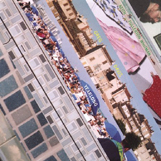
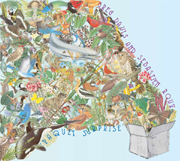
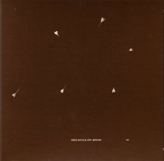
4. YEARLONG (with Keith Fullerton Whitman, Carpark, March 2005)
What started out as eighteen hours of improvisations recorded between 2001 and 2002 in Germany, Holland, France, and the US eventually turned into the 47-minute Yearlong. Is the final recording representative of a typical set that you might have played with Keith Fullerton Whitman?
Yearlong was meant to be a sampling of the different types of live sets that Keith and I played together. Since we improvised all of that music, it was quite different every night. So that CD gives a flavour of the different things we got into. The duo sets were generally longer than the pieces on the CD which are just edits.
Was the material the two of you created on stage totally improvised or did you ‘practice' before hitting the stage? Did you have nights where everything seemed to come together magically and other nights where things didn't gel? If so, how did you contend with the latter?
We always completely improvised those pieces. The only thing we would talk about beforehand would be maybe what instruments / sounds we were going to use or maybe how to start the piece, that was it. Then it would progress from there. Of course, with any improvised music, there are nights where it is really happening and nights when it's not. So we left off the improvs that were unfocused or didn't really settle into a good space. But I'd say on the whole that Keith and I mostly had good improvisations. I think we rarely had bad nights. We usually got into something interesting every night. Sometimes it took awhile and sometimes we could drop right into it.
Would it be fair to say that Yearlong is somewhat of a manifesto for open-endedness in general, that one should quit wasting time categorizing musical forms, and that differentiating between acoustic and electronic instruments, whether it be an acoustic guitar, kalimba, or laptop, is likewise misguided?
Yes, I think that was the idea with the CD. To really represent a wide range of music made with instruments and computers; also to showcase our command of using the computer as a live performance tool to shape and extend and process sounds in real time. That's what those early tours were all about, to show the laptop as a really powerful instrument, and try to demystify the process of electronic music and show that viable and fresh live music can be made with computers. The CD was ordered and chosen to represent a wide variety of musical styles and sounds, to show that we were doing really different improvised music every night, and the breadth of our interests in music and sound.
5. PAQUET SURPRISE (with Sébastien Roux, Carpark, October 2005)
Yearlong and Paquet Surprise seem like natural companions, despite the fact that you're collaborating with different artists (plus the fact that the later release was recorded during 2004-05). What do you hear as the fundamental sonic difference between the albums?
I don't view them as companions at all, actually. I see Paquet Surprise as more of an extension of Curling Pond Woods. Yearlong was completely improvised live music. Paquet Surprise was a studio album through and through, painstakingly constructed over the course of a year. So I think there is a huge difference between the two albums; it's very hard to compare them in my mind.
Fair enough. Given that a number of years separates the recording dates of the two albums, in what
ways had your own approach changed when you came to do the second collaboration?
Each collaboration is approached differently and openly for me. I've collaborated with a lot of different musicians and it's always a different process for making the music. It's more about getting into a shared common space than trying to force a certain way of working on it.
Is it possible that an even more pronounced sense of open-endedness permeates Paquet Surprise, given that a song like “To See the Wonderful World” includes folk, Beach Boys harmonies, drones, and field elements, and instrumentally the album also goes further than ever before (as credited, Davis contributes acousic and electric guitar, vocals, percussion, gong, farfisa organ, electric bass, kalimba, recorder, no input mixer, double mijwiz, autoharp, violin, field recordings, bowed glockenspiel, toy instruments, and computer; Roux's arsenal includes acoustic and electric guitar, vocals, piano, vibraphone, toy instruments, kalimba, and computer)?
Paquet Surprise takes song forms and ideas and structures to an extreme, really pushes the music hard, and makes for a really dynamic and fluid music. We wanted there to be a lot of musical surprises (hence the title) so jump-cutting from a pop song to a field recording was what we were going for; we wanted to juxtapose a lot of different elements together and make them flow and move to create new types of forms / sounds / songs. Most of the tracks on Paquet Surprise were started out as seed songs by Sebastien and then I would flesh out the arrangements and then we would take turns deconstructing / processing and playing around with the structures and feel of the tracks. We were constantly trying to surprise each other, too, which kept the project really exciting and fresh. It's one of my favourite albums; I'm really proud of it and kind of sad that it didn't get more notice in the world.
6. KU (with Jeph Jerman, ROOM40, 2006)
Are the release's three “strata” improvisations wholly acoustic or is there electronic processing involved too?
They are all acoustic improvisations. However, track one has some EQ to bring up the hiss and white noise of the recording. Track two has a little overdrive / distortion on it; track three has a little bit of room reverb added to it. But there was no sound processing done at all. It's just layered acoustic improvisations that Jeph and I recorded.
Given that the two of you use basic found objects (sticks, stones, prepared instruments, gongs, lo-fi electronics, percussion) to generate the album's sounds, one might assume that you're purposefully wishing to purify the music or reduce it to a fundamental essence. What prompted the selection of these objects in particular?
It was a pretty naural and organic process. We recorded all of the material at Jeph's home in Cottonwood, Arizona, so we used what was at hand. Jeph has a beautiful and vast collection of natural objects and sound toys and percussion and things so we just used that. I brought some things of my own, too.
Judging from the aural evidence, the range of influences upon your music appears to be
vast yet musique concrete and John Cage stand out as two particularly strong ones. Could
you comment on how those influences work their way into the three collaborative albums?
John Cage is a continual inspiration to my life and music. So that inspiration will be there in everything Ido (which is really an extension of Zen Buddhism). I think all of the music that I'm interested in and inspired by informs my music in a way. I try to be as open as I can about listening and listening is a huge part of making music. I like to be completely present with the sounds so I don't get channeled into one kind of thing or a certain style or “sound.” It's important to keep your ears open to new / different sounds and keep exploring the musical universe all the time and remain curious and have a sense of wonder and awe.
When you release material that's so dramatically different (e.g., Ku compared to Arbor), are you concerned that the average listener may have a tough time latching onto a signature ‘Greg Davis' sound? Or do you figure that that listener will regard the explorative impulse alone as your signature?
I'm not really concerned with what the listener will think about my different types of music. I don't differentiate between my different projects. It's all music to me and that's why I do it. I have too many interests in sound to do one type of thing so I explore lots of different areas. I know that some listeners might only like a certain aspect of my work and that is fine but I hope that people can check out all of my different music and open their ears and minds and hearts to the world of sound.
I believe that you're currently working on your next solo record. Can you fill us in a bit on how it's shaping up, what it sounds like, and if you have a target release date in mind?
As mentioned, it's called Joysongs and loosely right now it can be considered a collection of psychedelic Buddhist songs. I can't really say much more about it right now as it's still coming together but I'm hoping to have it finished by the end of the winter and then have it released by kranky in the spring / summer...
December 2007![]()